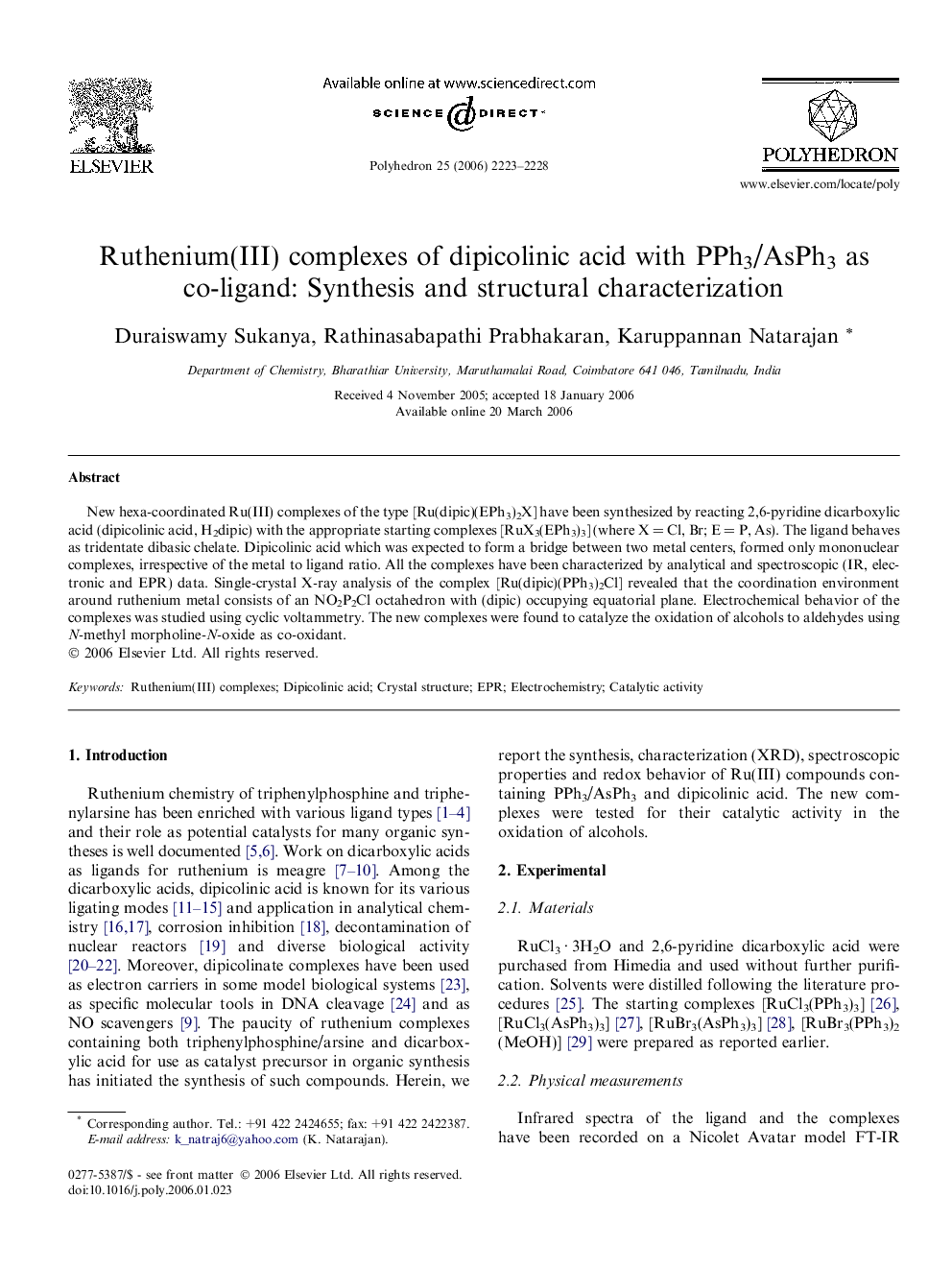| Article ID | Journal | Published Year | Pages | File Type |
|---|---|---|---|---|
| 1335713 | Polyhedron | 2006 | 6 Pages |
New hexa-coordinated Ru(III) complexes of the type [Ru(dipic)(EPh3)2X] have been synthesized by reacting 2,6-pyridine dicarboxylic acid (dipicolinic acid, H2dipic) with the appropriate starting complexes [RuX3(EPh3)3] (where X = Cl, Br; E = P, As). The ligand behaves as tridentate dibasic chelate. Dipicolinic acid which was expected to form a bridge between two metal centers, formed only mononuclear complexes, irrespective of the metal to ligand ratio. All the complexes have been characterized by analytical and spectroscopic (IR, electronic and EPR) data. Single-crystal X-ray analysis of the complex [Ru(dipic)(PPh3)2Cl] revealed that the coordination environment around ruthenium metal consists of an NO2P2Cl octahedron with (dipic) occupying equatorial plane. Electrochemical behavior of the complexes was studied using cyclic voltammetry. The new complexes were found to catalyze the oxidation of alcohols to aldehydes using N-methyl morpholine-N-oxide as co-oxidant.
Graphical abstractNew hexa-coordinated Ru(III) complexes of the type [Ru(dipic)(EPh3)2X] have been synthesized by reacting 2,6-pyridinedicarboxylic acid (dipicolinic acid, H2dipic) with the appropriate starting complexes [RuX3(EPh3)3] (where X = Cl, Br; E = P, As). The ligand behaves as tridentate dibasic chelate. Single-crystal X-ray analysis of the complex [Ru(dipic)(PPh3)2Cl] revealed that the coordination environment around ruthenium metal consists of an NO2P2Cl octahedron with dipicolinic acid occupying equatorial plane.Figure optionsDownload full-size imageDownload as PowerPoint slide
